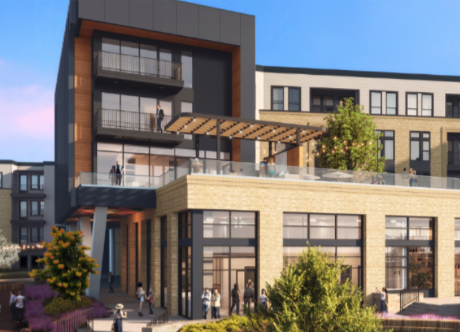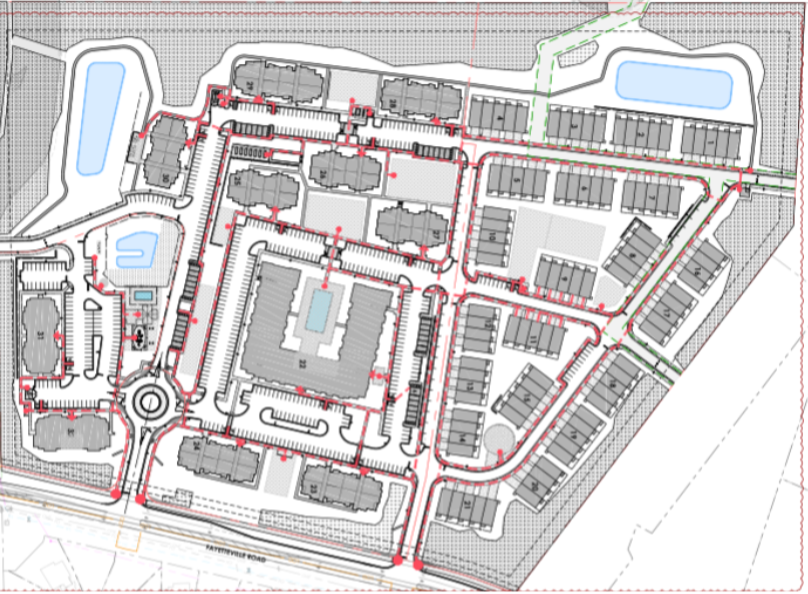Exploring the Booming Multi-Family Housing Market in North Carolina

NC's Red Hot Market Pushing Developers and General Contractors to Manage Construction Costs
North Carolina’s popularity among young professionals is driving demand and development costs for apartments. Land, labor and material expenses are rising as developers hasten to reap investment returns.
“We’re seeing massive in-migration to all of our markets, and the homeownership rate is at one of its lowest levels, so the renter pool is substantial,” said Scott Underwood, a partner in Woodfield Development, a developer based in Isle of Palms, S.C. of multifamily properties along the East Coast. “Multifamily is a strong place to be from a development standpoint, a construction standpoint, and an investment standpoint.”
Multifamily market boosted by delay in home buying
Sixty percent of younger households are delaying buying a home due to student debt, according to a Multi-Housing News article about the multifamily market. In 2019, average student debt per loan recipient exceeded $35,000, which was $8,000 more than average home down payments, the magazine noted, citing a U.S. Multifamily Research Brief from CBRE.
“Rising home prices and reduced inventories of lower-priced homes combined with high student debt give most millennials little hope of purchasing homes in the near future. A negative for younger would-be homebuyers represents a plus for the multifamily housing industry, which over the past decade has seen sustained high levels of demand,” Multi-Housing News reported.
North Carolina developers and contractors are working closely to meet strong demand and earn sizable returns by building desirable developments within constraints of time and budget. “We approach projects with a partnership mentality so that our clients lease up and earn the return on their investment as quickly as possible,” said Scott Niebauer, director of business development for Harold K. Jordan & Co., an Apex-based general contractor
HKJ helped Woodfield Development control costs on its projects, including one that it is building in Wilmington, Underwood said. “We are confident in them from a subcontracting standpoint, a cost standpoint, and a reliability standpoint.”
Niebauer says general contractors offer developers various construction services to complete projects on time and within budget, including:
- Site evaluations to identify any alterations that may be needed.
- Constructability reviews to determine the cost information that can be created and design changes that could be made for a more efficient, cost-effective layout.
- Accurate budget information based on current market pricing of labor and materials provided by subcontractors.
- Comprehensive schedules for managing construction and making decisions about the occupancy and management of the property.
HKJ keeps projects within budget and on time in part by handling problems itself whenever possible instead of involving the developer, Underwood said. “They seem to identify potential potholes and sinkholes early so that they’re not as much of an issue.”
The contractor spots potential problems by reviewing construction documents and working with its subcontractors, Niebauer said. They look for discrepancies among the plumbing, mechanical, and electrical (PME) design, the structural design, and the architectural design.
A developer may be told by the contractor that a sprinkler pipe would intersect with an HVAC line or that there’s not enough room in the ceiling — or that a door might have to be moved, for example. “We can say, ‘This is what we’ve experienced in the past. Would you consider this instead?” Niebauer said. “Our clients could have issues with site utilities or even building code changes and we have to be a team player and offer solutions for our clients”
Developers appreciate such foresight, Underwood said. “A lot of contractors would put a problem on our plate and ask us to handle it.” That could prolong construction and increase costs for the current project as well as delay additional development.

NC Multi-family Market Strong
Any delays could be costly for developers of multi-family properties given the abundance of opportunities that North Carolina presents. In Winston-Salem, the developers of the West End Station apartments earned a profit of $17 million when they sold the property for $52.5 million., according to a Winston-Salem Journal article about a rash of apartment sales in Forsyth County.
Underwood said: “We have an incredibly well-educated talent pool in most of our markets and a favorable business climate. Investors want to plant their flags here and own assets in our markets.”
Raleigh ranked fifth nationally in terms of rent growth in December, posting a 4.3% increase year over year, according to a Multi-Housing News article on the National Multifamily Report for December 2019, which cited results of a Yardi Matrix survey of 127 markets. Rents increased by 3% nationally.
Fannie Mae expects rents to increase by a similar rate in 2020, according to its Multifamily Economic and Market Commentary for January 2020. National multifamily rental demand could be between 300,000 and 360,000 units this year based on Fannie Mae’s projected job growth of 1.2%, or 1.8 million jobs. Though Dodge Data and Analytics projects deliveries to peak at more than 476,000 units in 2020, Fannie Mae doesn’t expect that many to be finished due to a scarcity of construction workers.
More than 80% of firms surveyed by the Associated General Contractors of America last year stated that it was hard to fill hourly and salaried positions, Fannie Mae noted. “We do not expect that trend to improve in 2020,” researchers wrote.
Finding Construction Industry Employees
In North Carolina, 91% of the firms surveyed reported having a hard time filling hourly craft positions and 73% expressed difficulty hiring for salaried jobs, according to the AGC 2019 Workforce Development Survey Results for North Carolina. Eighty-eight percent of firms have responded by increasing base pay rates for hourly craft workers, while 66% have done so for salaried employees. Twenty-five percent of firms have offered hiring incentives like bonuses to hourly craft workers, while 28% have done so for salaried employees.
“Construction costs are not increasing at the level that they were a couple of years ago but we’re still seeing steady increases. The labor pool is such that there are not enough folks doing the work out there, and everyone is strapped thin,” Underwood said.
Controlling costs could remain challenging as demand for multifamily properties continues to be strong, particularly among the more than 80 million millennials who collectively form the largest population of possible renters.
“The demographics are going to continue to be there for the multifamily rental market. We don’t see the way that people think about their needs or their lifestyles changing soon,” Underwood said. “We’re a big believer in the multifamily market for years to come.”
See the variety of projects Harold K. Jordan & Co. builds for developers and owners.
Harold K. Jordan & Co. (HKJ) is a general contractor that specializes in multi-family residential communities and commercial housing, both public and private. Founded by Harold K. Jordan the company is headquartered in Apex with offices in Wilmington, Charleston, and Myrtle Beach.
Source: Triangle Business Journal
Jim Molis is a contributor for The Business Journals Content Studio



